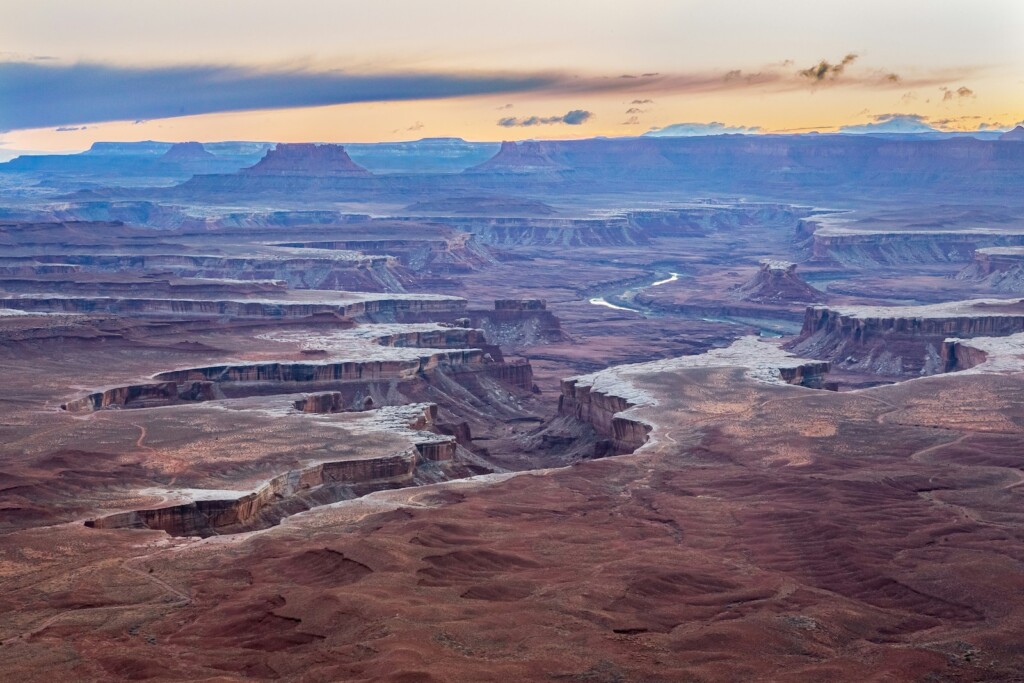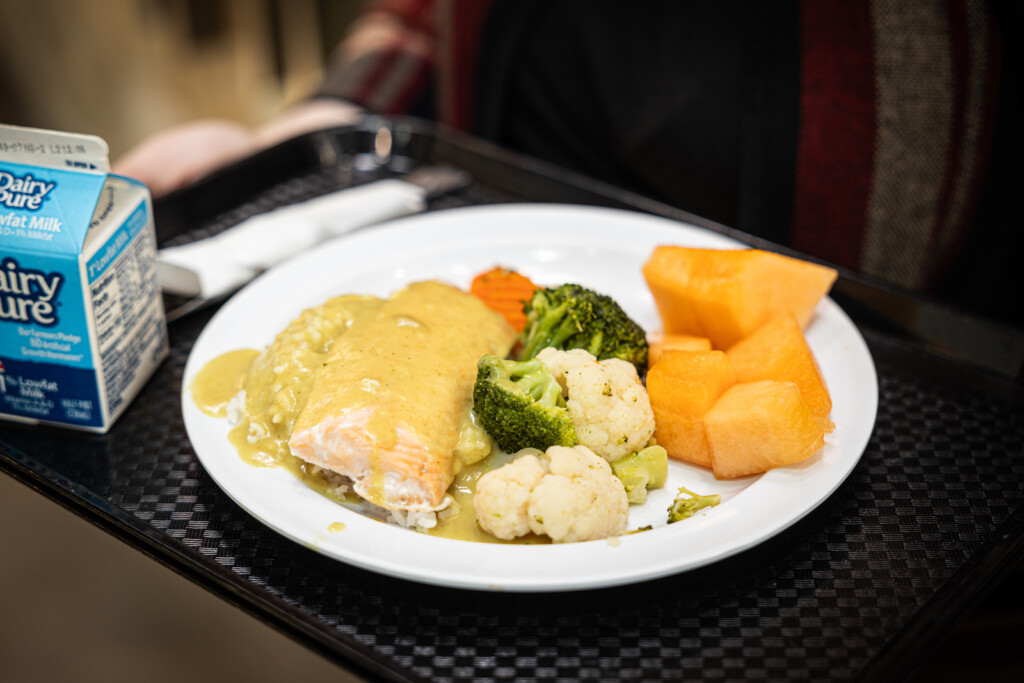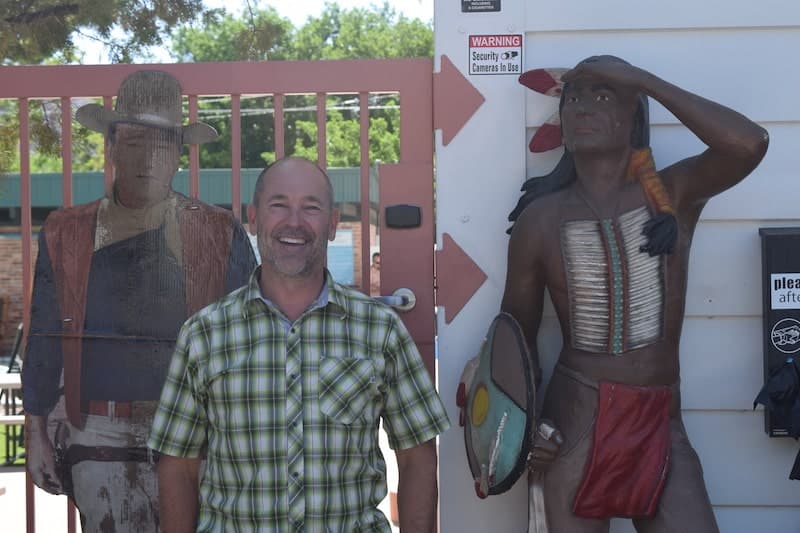
New owners breathe new life into a historic motel while preserving the past
Two figures stand outside the door of Moab’s Apache Motel: a weather-proofed lifesize cardboard cutout of the western film icon John Wayne, in a cowboy hat and a pistol hanging at his side; and a lifesize statue of a Native American man with feathers in his hair and a quiver of arrows at his feet. They harken back to an era when a fantasy version of “Cowboys and Indians” dominated Hollywood: the 1950s, which is also the decade when Moab experienced the uranium boom that transformed it from a small western outpost to a bustling industrial town full of rags-to-riches dreamers.
“Anyone that comes to Moab, or lives in Moab, or spends any time in Moab certainly knows the Apache Motel as kind of a landmark of the town,” said Burke Priest, who, with his wife Nicole, bought the motel in 2021. The motel’s bright yellow sign fixed to a post shaped like a feathered arrow is an eye-catching reference point. “It’s been there since 1955 and it’s on what was the original Main Street,” Priest said.
The Priests have been property managers for smaller overnight rentals for many years, though this is their first time owning a motel-style lodging property. They’re excited to join Moab’s hospitality industry. They had been visiting Moab since the 1990s before moving to town in 2011. Since buying the Apache, they’ve been updating it to include modern technology for check-in and entry, and amenities like high speed internet, as well as special touches like a heated bike wash, heated pet wash, and outdoor cooking and lounging areas. But, Priest said, they’re also careful to maintain the vintage feel and unique character of the motel, which was once a hub where Hollywood glamor met small-town hospitality, with a backdrop of the “wild west” narratives of movies filmed near town.
Renowned director John Ford frequently used Southeast Utah and sites around Moab for his genre-defining western films, including Fort Apache, (1948); She Wore A Yellow Ribbon, (1949); Rio Grande, (1950); and Wagon Master, (1950). The Apache Motel was built following this string of productions.
One story claims that the motel was named after Fort Apache, though it’s uncertain. Director George Sherman’s The Battle at Apache Pass (1952) was also filmed in the area and could have inspired the name.
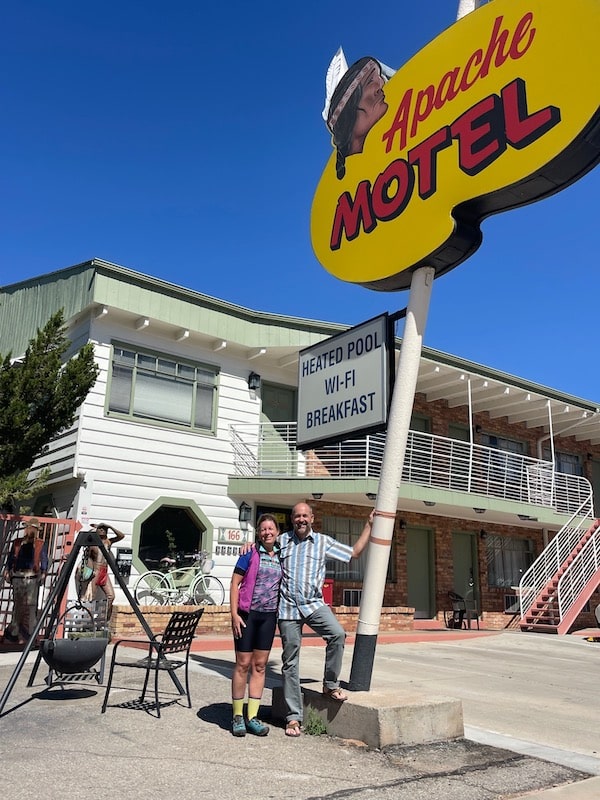
Aside from specific namesakes, appropriating Native words and imagery for branding is an ongoing habit of mainstream American culture—the Smithsonian’s National Museum of the American Indian currently has an exhibit of such examples through the decades, from motorcycles to sports teams to grain, sugar, produce and toys. In the 1940s, a bus company called the Apache Flyer served stops between Albuquerque and Salt Lake City, including Moab, and local newspapers at the time reference a mining company working in the area called Apache Uranium Mines.
Whatever the inspiration for the motel’s name, it’s the association with Hollywood stars that lingers there today. Silver screen cowboy John Wayne, who starred in many of John Ford’s movies, is said to have stayed there for months at a time, along with other actors and members of the film industry. A photo displayed on the lobby wall shows the famous actor posing with two Moabites in their teenage years: Carl Rappe, who later founded Moab’s local radio station, and David Sakrison, who later served as mayor of Moab and opened a corner store that’s still in operation today.
Priest has made himself an expert on old western movies so as to be a good host for guests who come specifically for that connection. He visited John Wayne’s birthplace in Iowa and explored the John Wayne museum. Though he wasn’t particularly interested in westerns before, he said he’s now probably the “number one” John Wayne fan. The motel hosted a celebration of John Wayne’s 107th birthday on May 26. “We kind of like to have a lot of fun,” Priest said. The motel also hosts free s’mores around an outdoor campfire in the evenings.
Guests can choose to stay in the John Wayne suite, the same set of rooms where “the Duke” would make himself at home on trips to Moab. A recent guest in the suite, traveling with her grandkids, said she’s stayed in there several times over the past eight years. Her mother and stepfather stayed in the suite on their honeymoon, as well.
“We’ve stayed at motels in other places, but this one we know will be perfect,” she said.
While comfort items in the rooms—like climate control, water pressure, and entry systems—have been updated, the Priests retained many of the decades-old furnishings and décor, preserving a genuine feeling of a bygone era. In the John Wayne suite, a dresser in dark-colored wood with a wavy-edged top stands across from a four-poster bed, also in dark-colored wood and covered with a dense quilt.
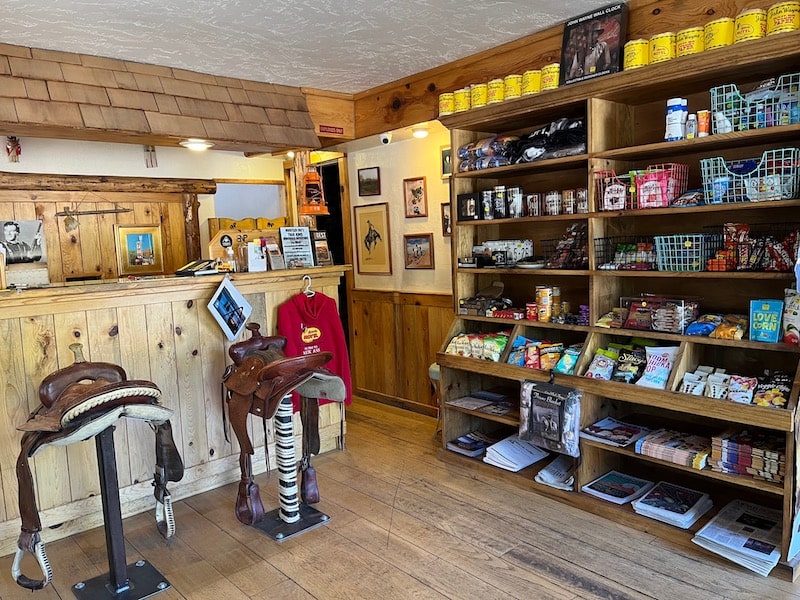
The building itself recalls the 1950s in a way that can’t be replicated through superficial touch-ups. The brick, bungalow-style two-story with a balcony on the second floor was cutting edge at the time the motel opened. A 1955 article in the Moab Times-Independent called it a “completely ultra modern 28 unit swanky motel,” and touted its wall-to-wall carpeting and phone and room service in each unit. In addition to being a destination for the stars, locals used it for special occasions like weddings, business conferences, and graduation celebrations.
In the heart of the building, a decommissioned oil-burning boiler hulks behind the modern water heater that’s used now; the dimensions of the stairways and ceilings are slightly different than modern standards, giving the authentic feel of an older building. The motel is listed on the National Register of Historic Places in recognition of its iconic style and its connection to the uranium era and the film industry, both of which have helped shape Moab.
Priest said that the very energy from the past was still tangible in the motel when he and Nicole first bought the place and started renovating. He referred to these energies as “non-paying guests.”
“They would be on the stairs in places where you needed to go, and there was resistance,” he said. Early guests would report hearing repetitive sounds at night or finding things lightly rearranged in their rooms in the morning. The Priests contacted a Moab local who specializes in transitioning spirits, and who was able to help the energies or spirits move out of the building. Priest said the mysterious occurrences have since stopped.
The motel has been busy with regular, flesh-and-blood guests, though. Priest says they’ve been full most nights. His two sisters, one of whom recently moved to Moab, and the other who lives in northern Utah, have pitched in to help manage the business, making it a family venture.
“We love being there, and are just thrilled with the opportunity to buy the Apache Motel and bring it back to life,” Priest said.
166 4th E Street, Moab, Utah.
RELATED CONTENT
Moab’s Canyon & Waffle House: The Last Coffee-Counter in Moab, Utah
Moab Workers Build Their Own Homes to Overcome Housing Shortage
Moab Growth Limited by Building Cost and Water Supply
SUPPORT LOCAL JOURNALISM AND SUBSCRIBE TO PRINT MAGAZINE
Subscribe to Utah Stories weekly newsletter and get our stories directly to your inbox


